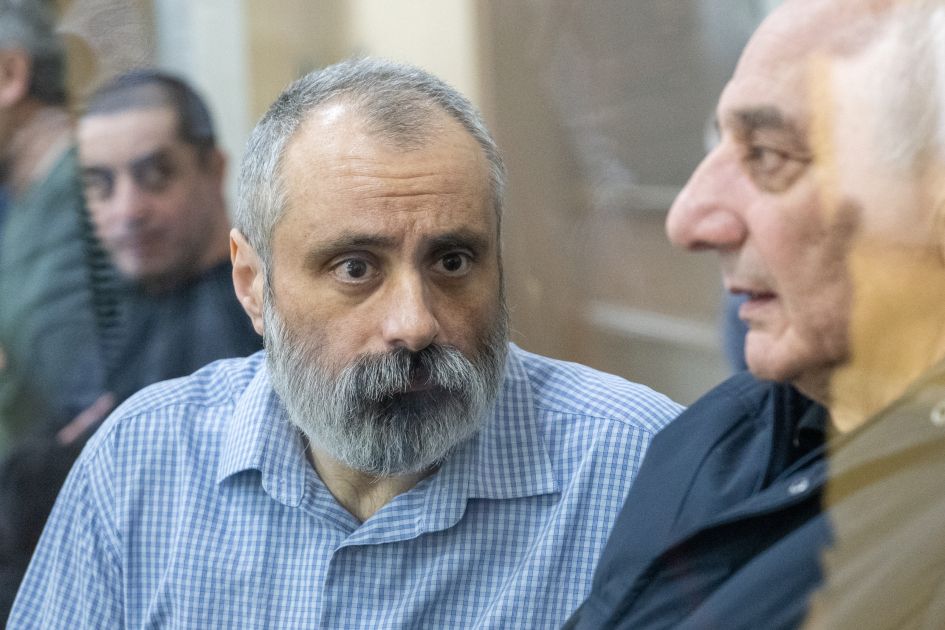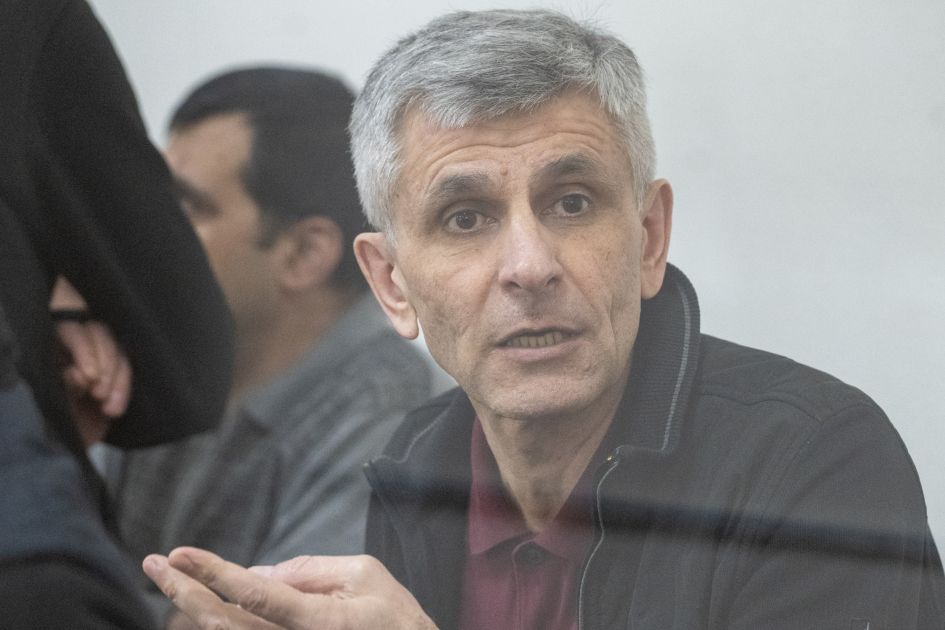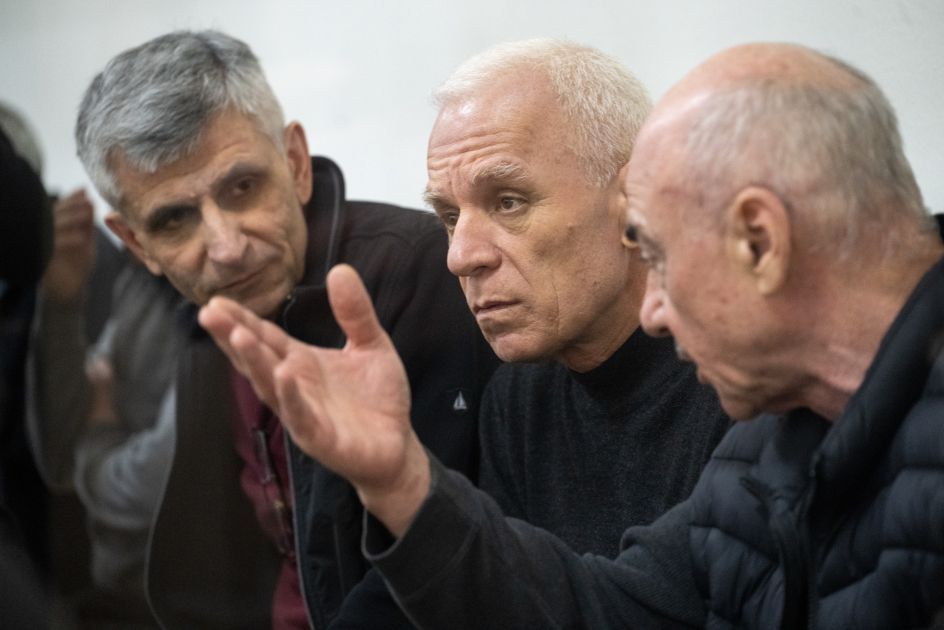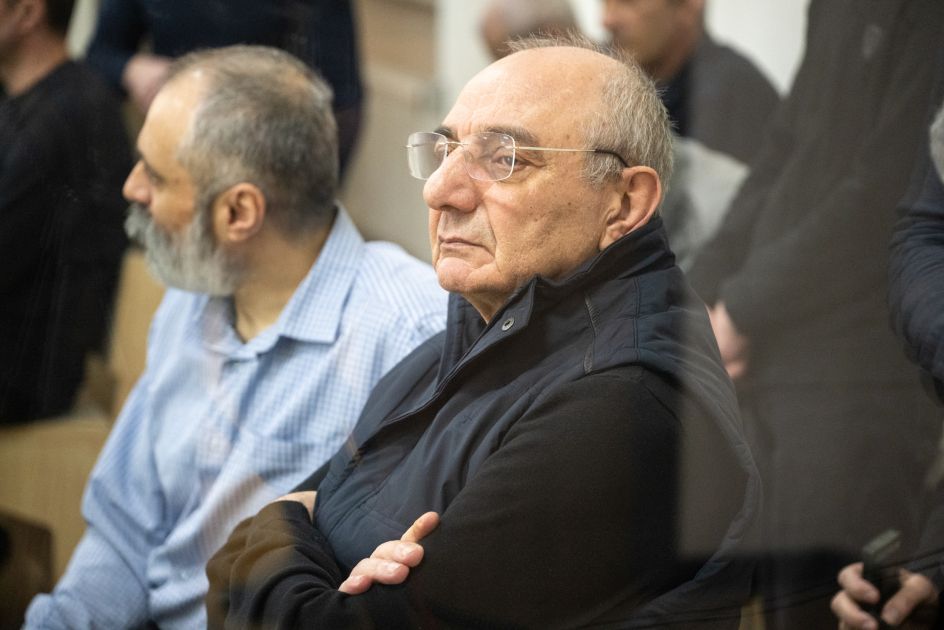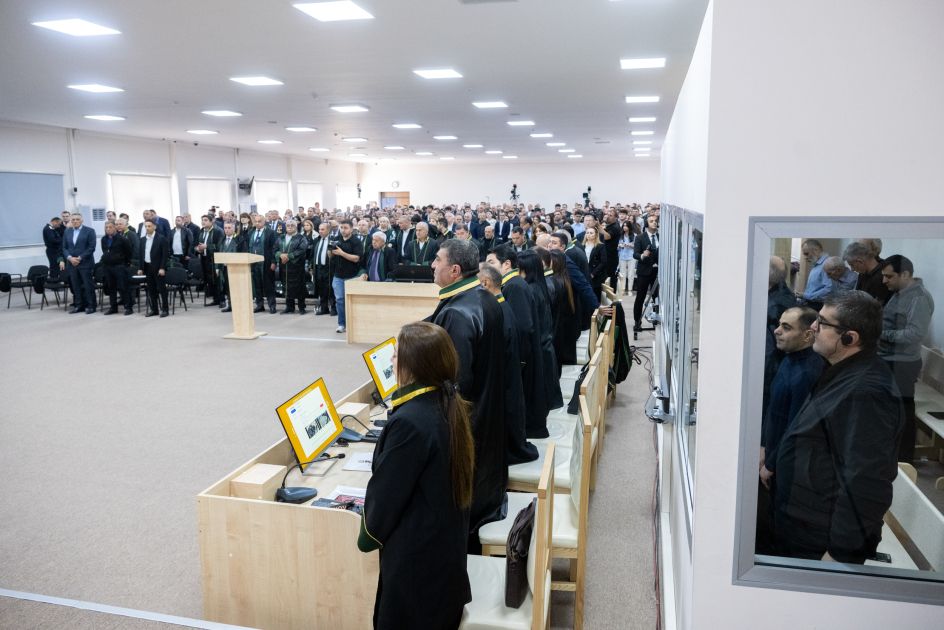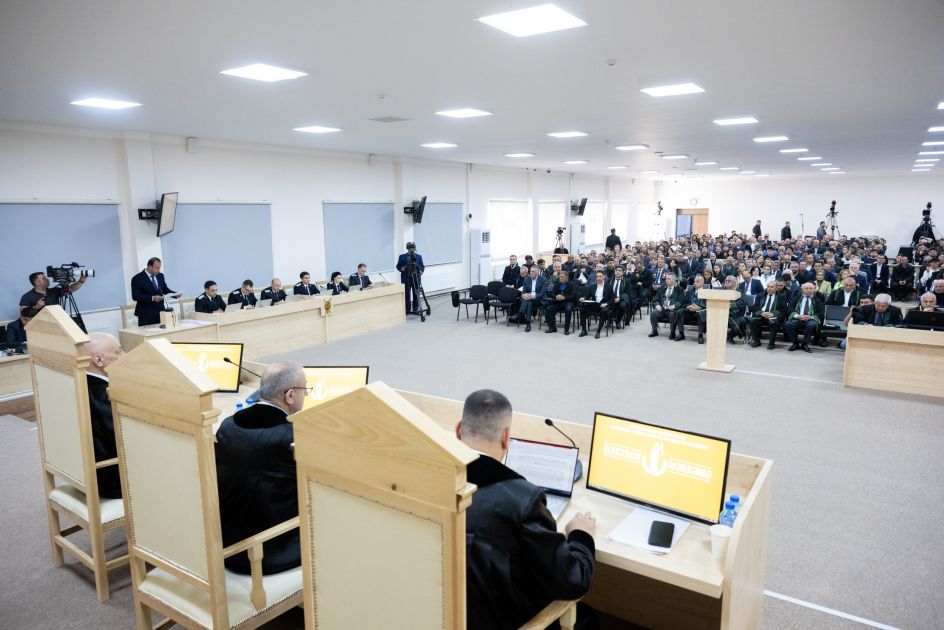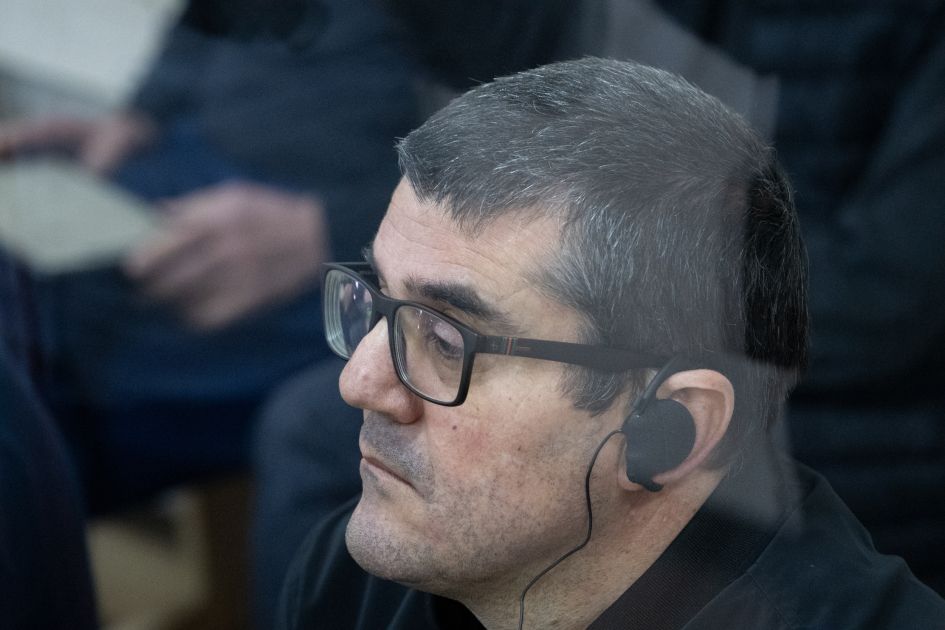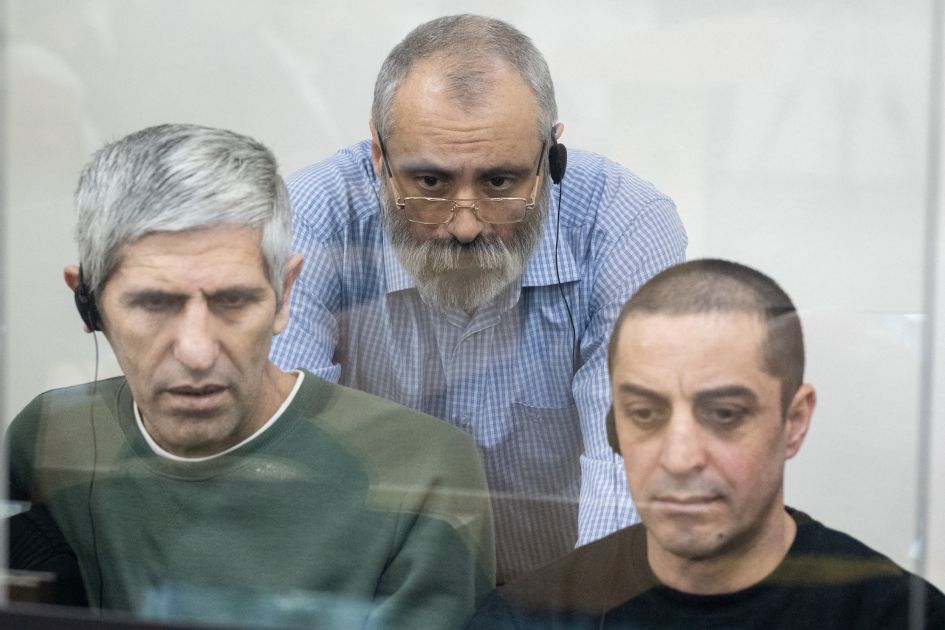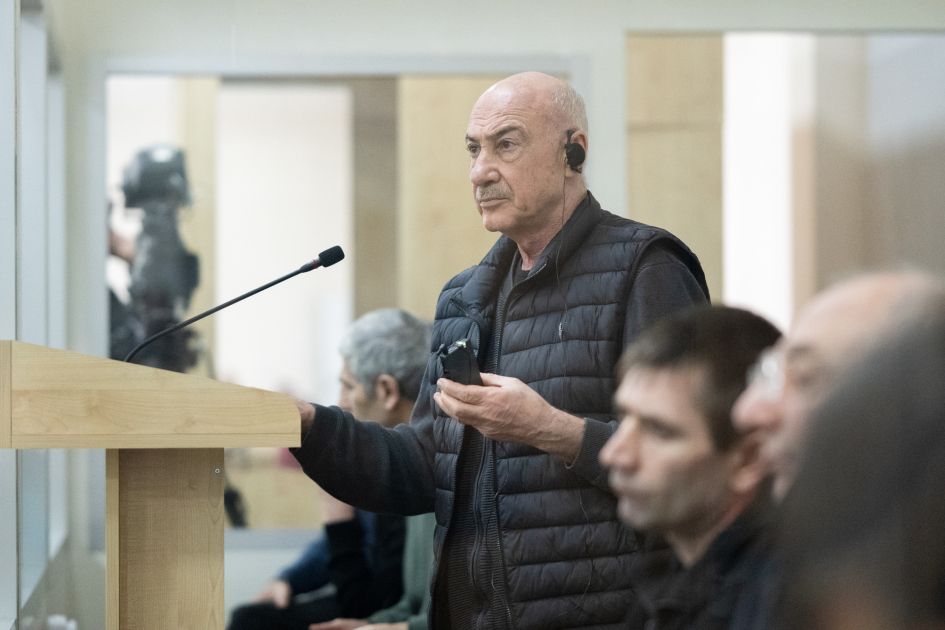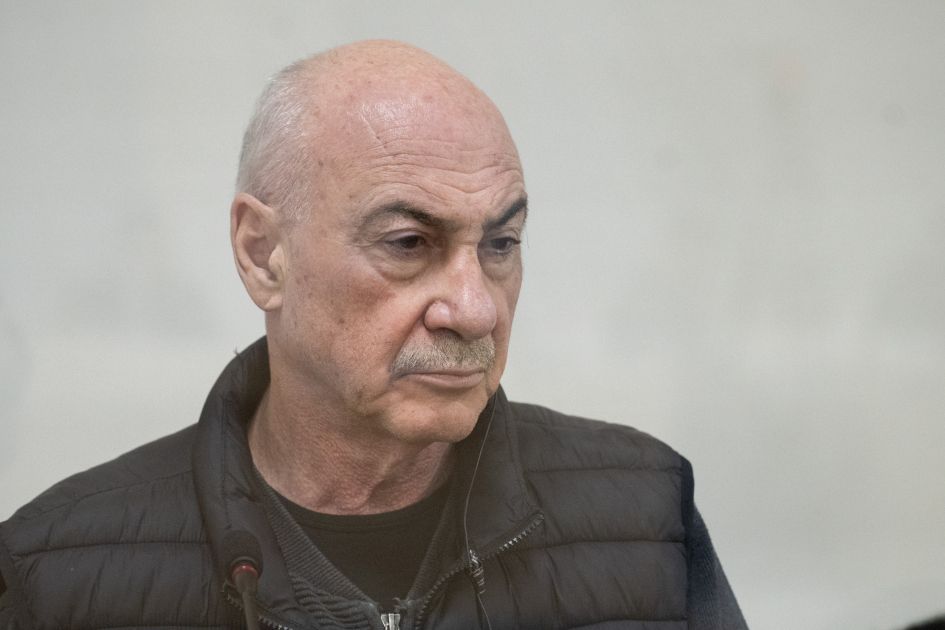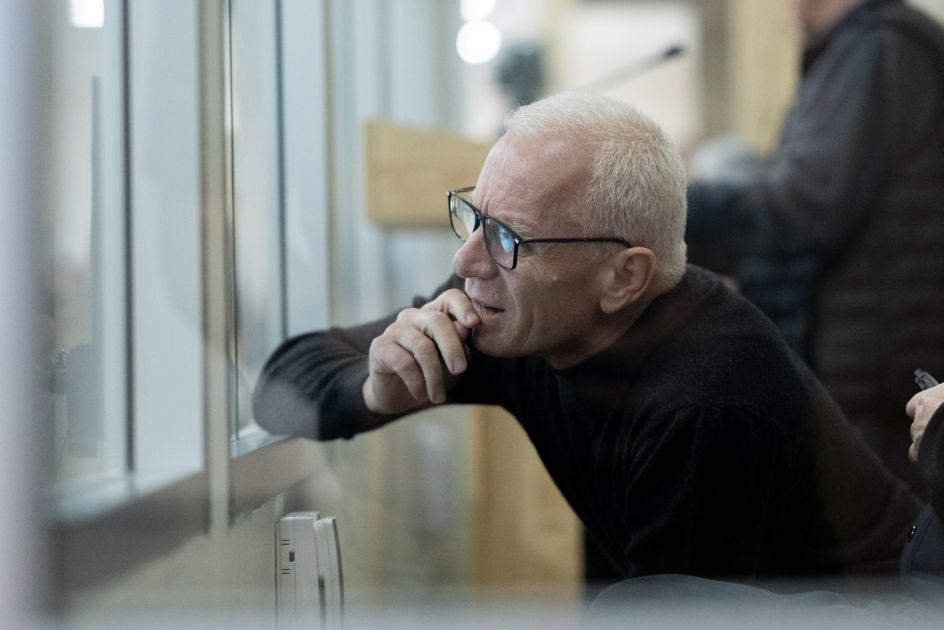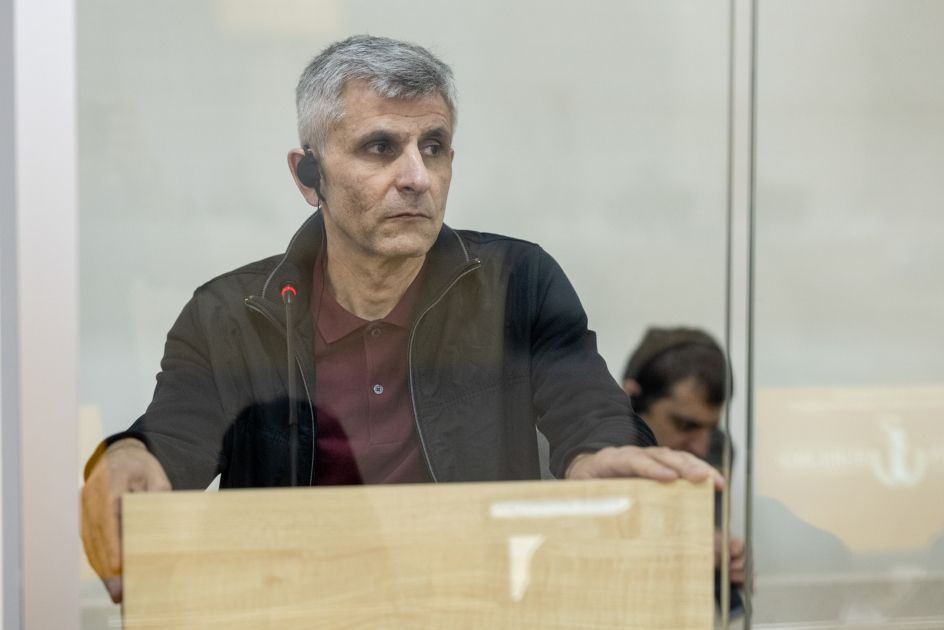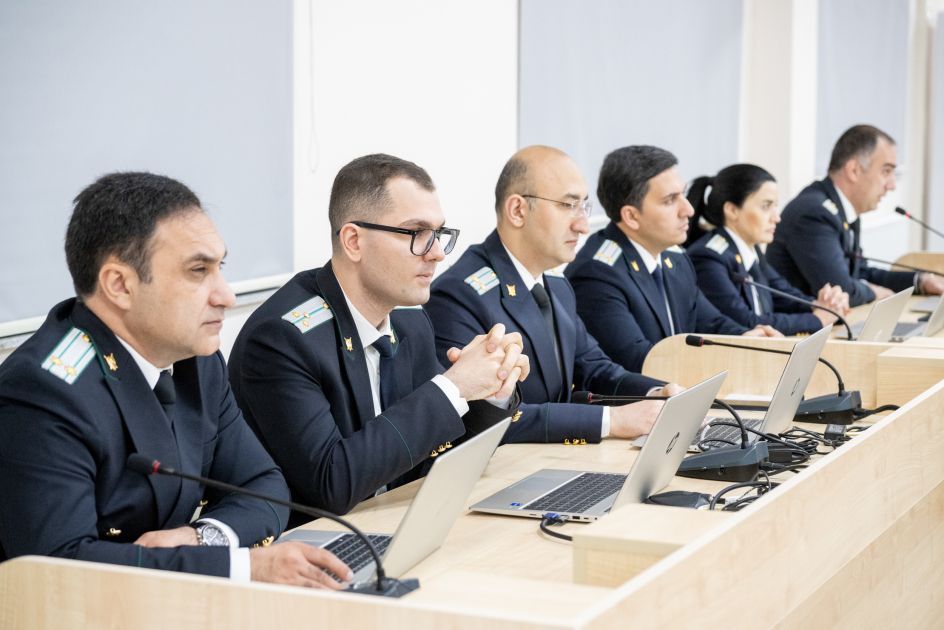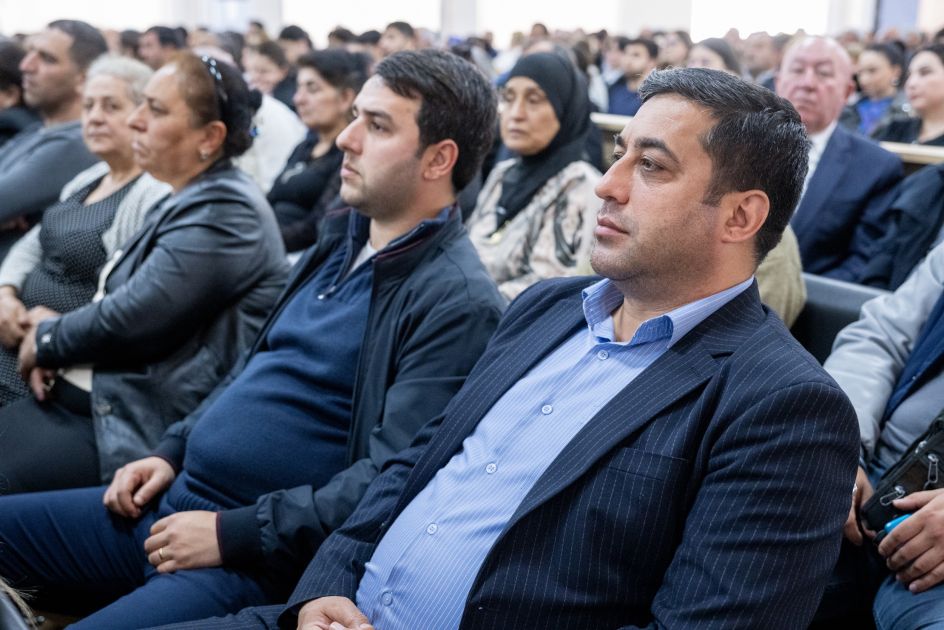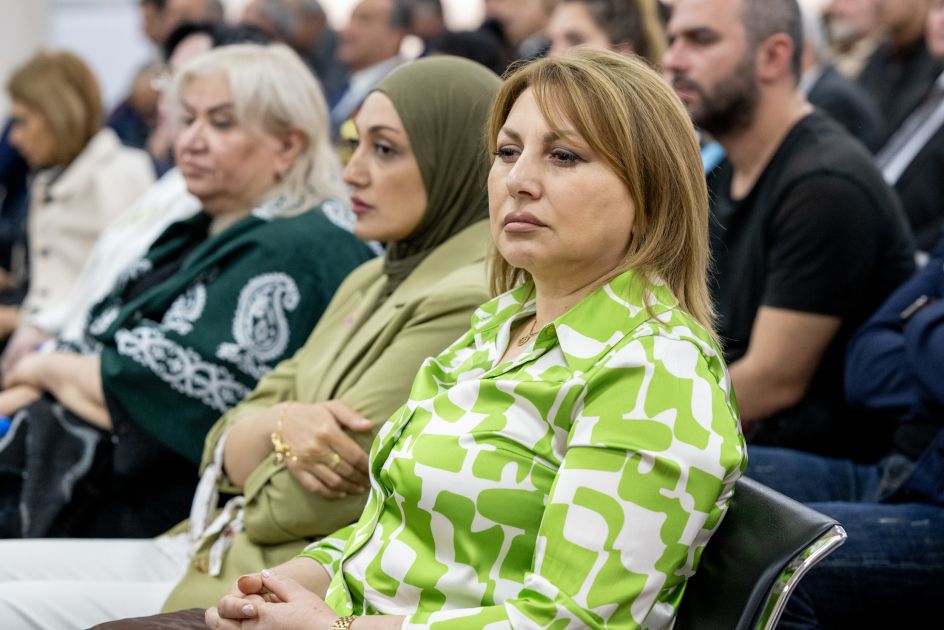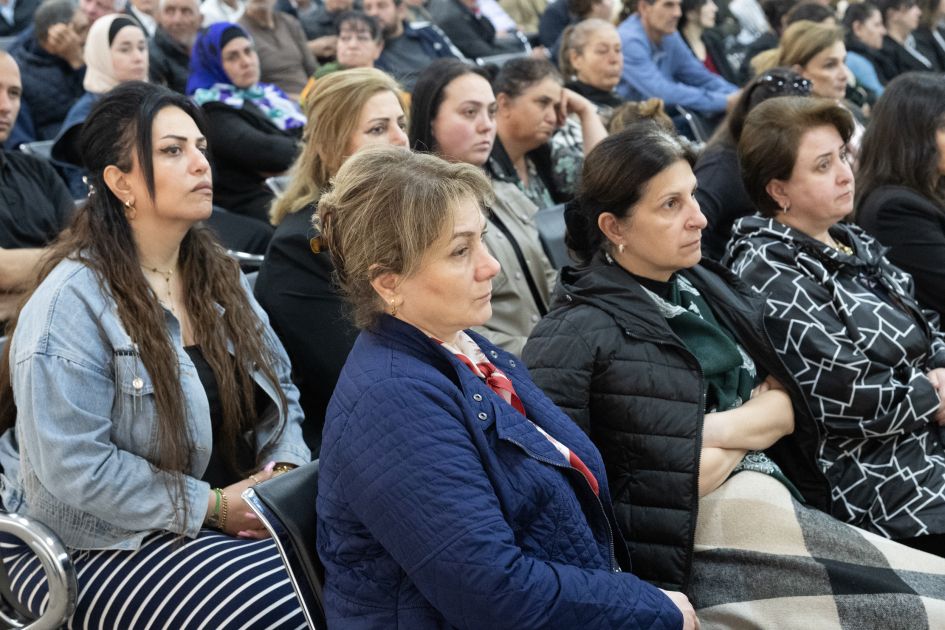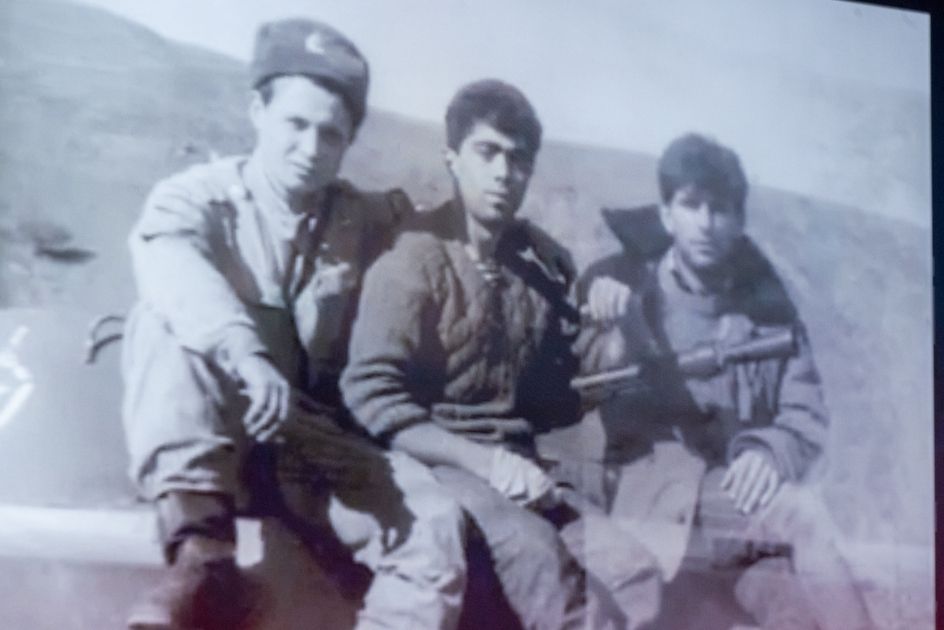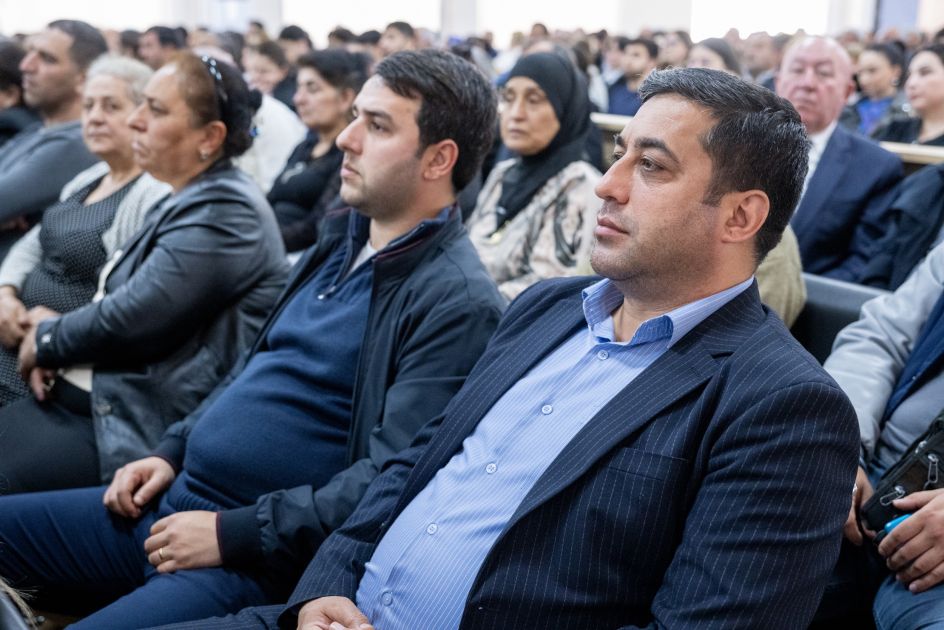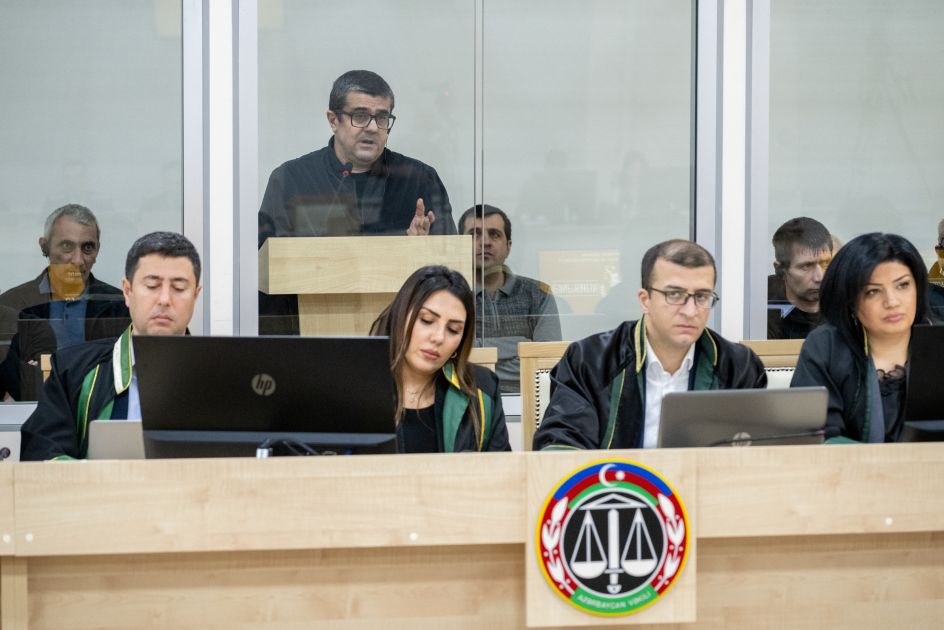Baku Court examines atrocities in Qaradağlı and Shusha as Armenians accused of war crimes stand trial [PHOTOS]
![Baku Court examines atrocities in Qaradağlı and Shusha as Armenians accused of war crimes stand trial [PHOTOS]](https://www.azernews.az/media/2025/05/01/1746124751942154469_1200x630.jpg)
The public hearing of the criminal case involving Armenian citizens Arayik Harutyunyan, Arkadi Ghukasyan, Bako Sahakyan, Davit Ishkhanyan, David Babayan, Levon Mnatsakanyan, and others—accused of committing crimes against peace and humanity, war crimes including the planning and waging of aggressive war, genocide, violations of the laws and customs of war, terrorism, financing of terrorism, violent seizure and retention of power, and numerous other crimes as a result of Armenia's military aggression against Azerbaijan—continued on May 1.
Azernews reports that the session was held at the Baku Military Court under the chairmanship of Judge Zeynal Agayev, with Judges Jamal Ramazanov and Anar Rzayev also presiding (alternate judge Gunel Samedova). All the accused were provided with interpreters in their native languages and defense lawyers.
The session was attended by the accused, their defense lawyers, some of the victims, their legal successors and representatives, and prosecutors representing the state.
Judge Zeynal Agayev first introduced Zeynab Salamova, who would serve as the English interpreter for the trial materials presented in English.
The judge introduced the court panel, interpreters, and other procedural figures to victims participating for the first time and explained their rights and responsibilities as provided by law.
A video was shown at the hearing depicting accused Arkadi Ghukasyan in Shusha immediately after its occupation.
During the examination of the footage, Tugay Rahimli, assistant to the Prosecutor General for special tasks, confirmed the video was recorded right after Shusha's occupation and posed questions to Ghukasyan.
In his response, Ghukasyan identified the people accompanying him in Shusha: “The man in civilian clothes in the middle is the driver. Behind me, wearing a suit, is Oleg Isayan. In the background, I recognized Armen Isagulov. The second is Zori Balayan. The man in civilian clothes is Vasili Atajanyan. Now Bishop Pargev is approaching where the driver stood... I don’t recognize the others. Apparently, they are military personnel.”
Another video was shown involving the accused Davit Ishkhanyan, showing him and his group blocking Azerbaijani troops attempting to stop the occupation of Shusha.
The video claims that under orders from Monte Melkonian, Ishkhanyan and his group blocked Azerbaijani advances from the Khojavend direction to prevent Shusha's defense. It stated that on May 15, 1992, group commander Armen Avokyan was killed, and Ishkhanyan was appointed in his place.
In response to questions from state prosecutor Vusal Abdullayev, Ishkhanyan denied the video's accuracy, claiming it was propaganda filmed in early 2020 during the so-called “parliamentary and presidential elections” in the then-occupied territories. “It was for propaganda. I was walking with a cane at the time. Even if I wanted to, I physically couldn’t have participated,” he said.
Footage of an interview with accused Arayik Harutyunyan was also presented and examined. In the film, Harutyunyan discusses a platoon commander’s role in battles at Karkijahan, Malibeyli, and others.
Harutyunyan claimed he did not participate in those battles and was studying at the Agricultural Institute in Yerevan at the time. He admitted he made such claims in 2020 during the “election campaign” of the so-called regime to avoid doubts about his war record: “I prepared documents with witnesses claiming I participated in battles. That information was meant to reflect my supposed wartime service. I got that information from friends and my brother’s diary. If not, my service would have been questioned in the 2020 elections. But in reality, I was a student then.”
Answering his lawyer, Harutyunyan said he moved to Karabakh permanently in late August or early September 1993.
In his statement to prosecutors, Harutyunyan also confirmed that individuals who led the Shusha operation also took part in the occupation of Lachin. Referring to previously presented video, he named Samvel Babayan, Seyran Ohanyan, Valeri Chitchyan, Arkadi Karapetyan, and others, noting that he knew all of them except Valeri Chitchyan.
“What’s said in the film is accurate. They participated not only in Shusha but also in the Lachin operation. The Shusha operation was the first unified offensive, which continued from May 17 to 19,” he said.
Harutyunyan also confirmed that Zori Balayan frequently visited Karabakh and met with all senior figures.
Documents were presented concerning various crimes committed before the occupation of Qaradağlı village, including the downing of an Azerbaijani helicopter.
These crimes included attacks by Armenians on Qaradağlı in 1989–1991, the killing and mutilation of Azerbaijani civilians, burning of bodies, looting of the village, theft of livestock, and firing on civilian buses resulting in deaths and injuries.
The court also examined protocols regarding the downing of a helicopter on November 20, 1991, in Qarakənd. All 22 on board were killed. A criminal case was launched the same day by the Khankendi Military Prosecutor’s Office. At the scene, weapons belonging to Mahammad Asadov, Ismat Gayibov, Igor Plavsky, Nikolay Zhinkin, and a Panasonic 450 AJ camera belonging to cameraman Fakhreddin Shahbazov were missing.
A section was read from Markar Melkonyan’s book “My Brother’s Road”, which stated: “By 5 PM, Armenian forces had achieved their objectives. One Armenian and two Azerbaijanis were killed, and 48 were taken prisoner and loaded onto a truck.”
The book also described an Armenian soldier known as “Shram Edo” pouring gasoline on several wounded Azerbaijani soldiers and burning them alive. “When Monte reached the trench on the village outskirts, it had become a slaughterhouse,” it reads.
Victims of these events later testified in court.
Victim Seyyur Naghiyev said he was born in Qaradağlı, recognized accused Davit Ishkhanyan, and said he was from a neighboring village. He testified that before the 1992 occupation, Armenian forces repeatedly attacked the village, killed civilians, burned houses, and looted livestock.
From February 15–17, 1992, Qaradağlı was surrounded and attacked from all directions, including by mercenaries. Naghiyev stated that attacks began as early as 1989.
He listed relatives killed during the occupation: “Eldar Dadasov, Aftandil Naghiyev, Ugur Dadasov, Mikayil Dadasov, Manaf Dadasov... and others. Everyone killed in Qaradağlı was family. Some remain missing.”
He said he was taken hostage and brought to Khankendi, where they endured severe torture in freezing weather. He was later released through mediation by Allahverdi Baghirov.
He added that the attacking forces were commanded by Manvel Yeghiazaryan of the “Arabo” battalion. The court showed Yeghiazaryan’s photo, and Naghiyev confirmed his identity.
Another victim, Vidadi Huseynov, testified that attacks on Azerbaijanis began in 1988. “They attacked buses, burned civilians alive, and looted property. They tied Azerbaijanis to trees and shot them,” he said.
He added that during the February 1992 assault, the village held 118 civilians—women, children, and the elderly. Around 400–500 armed Armenians attacked, including fighters from Armenia and foreign mercenaries. On February 17, the village fell.
Ilgar Huseynov testified that he was taken hostage, transported in trucks, and witnessed 33 people being executed in a place called “Beylik Bagi.” “They shot 33 people there. I and the rest were taken to Khankendi,” he said. He endured torture and was released 45 days later in a prisoner exchange.
Victim Amiraslan Guliyev confirmed the February 17 attack from four directions. Over 30 hostages were taken from vehicles and executed; their bodies were dumped into a pit. Others were tortured in Khankendi.
Bakhshayesh Huseynov testified that he too was taken hostage and tortured in Khankendi: “They pierced our bodies.” He was held for 56 days.
Shamkhal Shirinov testified that Qaradağlı was regularly shelled in 1991–1992. During the siege, the village lost contact with the outside world and suffered severe food shortages. He was taken hostage and tortured—his teeth were pulled out, and he was beaten and injured multiple times.
The next court session is scheduled for May 2.
It is noted that the crimes were committed under the direct leadership and participation of the Armenian state, its officials, military forces, and illegal armed groups, with centralized coordination, orders, instructions, material support, and supervision—including by Robert Kocharyan, Serzh Sargsyan, and others.
Here we are to serve you with news right now. It does not cost much, but worth your attention.
Choose to support open, independent, quality journalism and subscribe on a monthly basis.
By subscribing to our online newspaper, you can have full digital access to all news, analysis, and much more.
You can also follow AzerNEWS on Twitter @AzerNewsAz or Facebook @AzerNewsNewspaper
Thank you!

